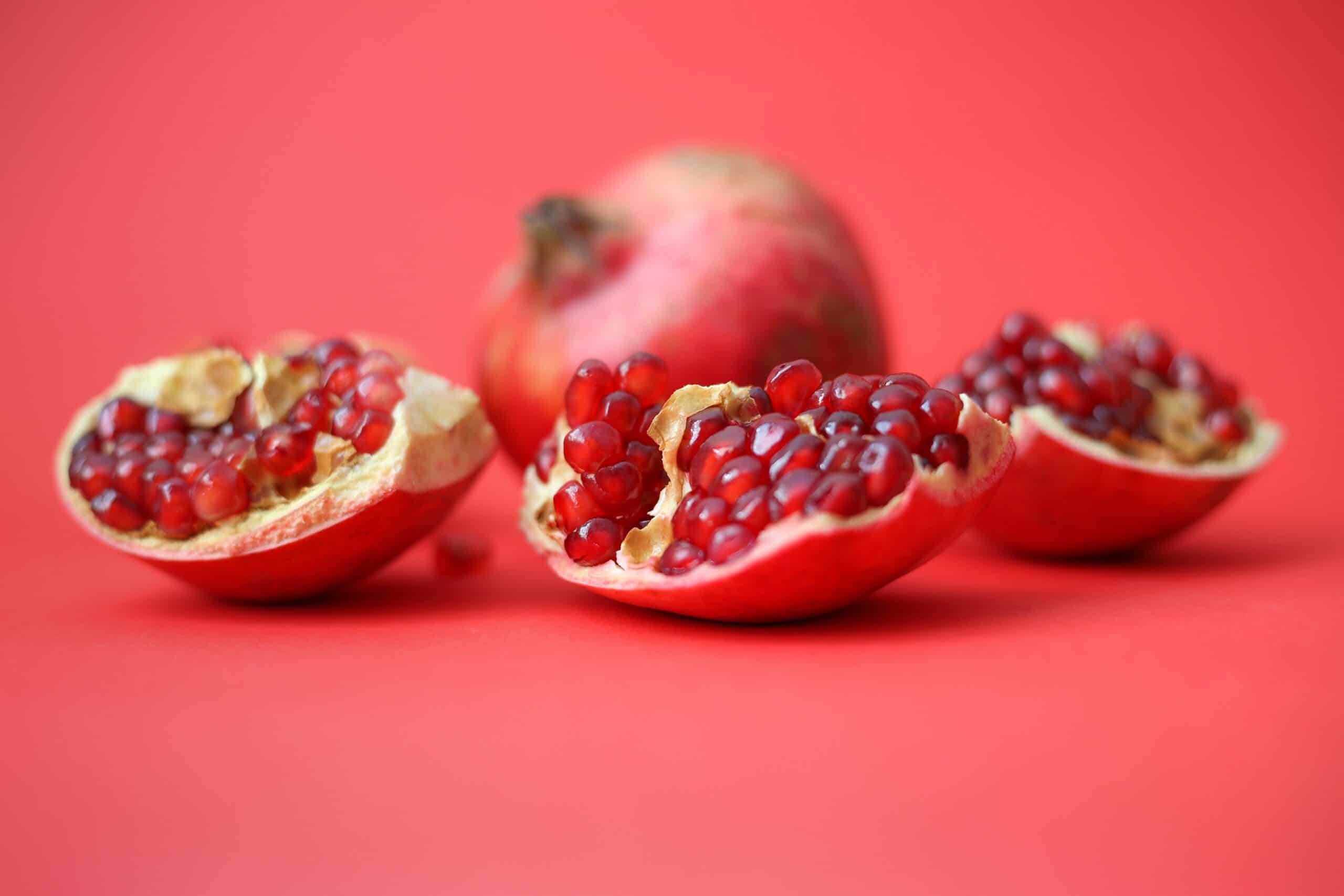Craving for a refreshing glass of chilled pomegranate juice?
Feeling a bit confused about the number of pomegranates required to fill a cup?
You’ve landed to the right article!
We gathered a handful of pomegranates, grabbed our cups, and voila—this article is here at last. As a delightful bonus, we’ve also spilled the beans on our wicked pomegranate juice recipe!
How Many Cups of Seeds in a Pomegranate
A single, fully ripe, average-sized pomegranate boasts an entire cup of seeds. This singular cup amounts to approximately 552 pomegranate seeds derived from just that one fruit. Surprisingly light in weight, these edible seeds collectively tip the scales at around 5 ounces.
Which Type of Pomegranate Has the Most Seeds?
Pomegranates exhibit diverse sizes and abundant seeds, with the average pomegranate tipping the scales at 9 ounces. As a general rule, larger pomegranates tend to house a higher seed count.
How do we know this?

Yes, it seems we do have a lot of time on our hands!
Now, the moment you’ve been waiting for – the results for each pomegranate size:
- Small: 300 to 430 seeds
- Medium: 430 to 590 seeds
- Large: 590+ seeds
Our most noteworthy seed count achievement was a staggering 834 seeds in a single pomegranate! And we found these seeds to be larger than the standard variety.
For those dealing with pint-sized pomegranates (weighing less than 9 ounces), it might take two of them to fill a cup. Keep in mind that more miniature pomegranates may smaller seeds.
Varieties of Pomegranate
Broadly, there are three varieties of pomegranates.
Sweet Pomegranates
This variety has yellowish skin, and its seeds exhibit a delicate shade of light red.
But what sets them apart? They’re extra sweet!
Wonderful Pomegranate
These are the most common variety.
Wonderful pomegranates feature vibrant red skin and ruby red seeds and are impressively large.
We recommend them for making delicious juices!
Parfianka Pomegranate
These pomegranates are best for eating raw. They have dark red seeds with beautiful red skin and are absolutely delicious!

Can you Swallow Pomegranate Seeds?
Pomegranates gift us with edible seeds that are not only safe but also delicious when consumed raw. No need to worry – you won’t be sprouting a pomegranate tree in your stomach. The flavor is a delicious mix of sweet and sour, reaching its peak when the fruit is perfectly ripe.
The taste is very distinct and may be similar to tart grape juice.
Picking a Pomegranate
When on the hunt for pomegranates, whether at the store or eyeing those in your backyard, prioritize the bigger ones. Size and weight are key indicators of ripeness and juice content. Opt for the substantial and weighty options for a juicier experience.
Another crucial criterion is the skin. We advise selecting pomegranates with leathery skin that’s free of cracks.
However, don’t be alarmed if the skin isn’t perfectly smooth! Mounds and bumps are typical characteristics of well-ripe pomegranates and indicate a deliciously juicy interior.
Making Pomegranate Juice
To craft a single glass of pomegranate juice, you’ll require one and a half cups of pomegranate seeds. Planning to stock up on pomegranates? We suggest grabbing two of these delightful fruits per glass of juice. Now, if you’re aiming to fill a jug, set your sights on five large pomegranates.
Prep time: 30 minutes!
Items you’ll need to make pomegranate juice:
- Blender
- Five pomegranates or 5 cups of fresh seeds
- Paring knife
- Plastic cutting board
- Cup, bowl, and plate
- Spatula
- Lemon juice
It’s easy to juice a pomegranate once you have everything listed above. Here is the step-by-step guide below:
Step 1: Cut in a circle and remove the crown of the pomegranate, also known as the pomegranate’s blossom end, with the knife. Do the same with the stem end.
Step 2: Cut the pomegranate from one end to the other, and break it in half. Cut the half again to have a total of four sections.
Step 3: De-seed and peel the sections in a bowl of cold water to avoid making a mess. Discard the skin and white membranes. If you cut on a cutting board, you can use lemon juice to remove the stains.
Step 4: Removing seeds inside the water and discard discolored seeds. Discolored seeds are transparent instead of red.
Step 5: Drain the water and transfer the seeds to a clean plate.
Step 6: Pour the seeds into a blender and start it. Let it blend for a couple of minutes.
Step 7: Pour the juice mix into a container through a strainer. Use a spatula or spoon to press the thick pomegranate pulp to strain faster.
That’s it! You now have a jug of fresh juice, and you can pour it into glasses to serve yourself, your friends, and your family!
Homemade juice tastes much better than store-bought juice, has less sugar content, and is much better for your health. (See More)
Nutritional Benefits of Pomegranate Seeds
Pomegranates are luscious fruits packed with essential nutrients, including fiber, vitamin C and K, iron, and potassium. Consuming the seeds from a single whole pomegranate can fulfill 20-30% of your recommended daily intake of these vital nutrients.
Calorie count of one pomegranate: 230 calories.
Beyond their nutritional prowess, pomegranates are a powerhouse of antioxidants and boast impressive anti-inflammatory properties—outshining even green tea. Clever researchers have unearthed their potential in lowering blood pressure, combating arthritis, and improving memory.
But wait, there’s more! Pomegranates harbor a precursor to Urolithin A, an anti-aging molecule.
Scientific studies indicate that this molecule has the remarkable ability to postpone muscle aging, offering a promising defense against the natural slowing down that comes with aging. (See More)
And here’s a bonus: Homemade pomegranate juice not only tastes much better than store-bought juice, but also packs a health punch with lower sugar content.
How to De-Seed and Freeze Pomegranate Seeds
Freezing and storing pomegranate seeds for later use is a convenient option. You can also freeze whole pomegranates, although they occupy more space in the fridge compared to just the seeds.
Here’s what you’ll need for seeding a pomegranate:
- Knife
- Cutting board
- Pomegranate
- Pomegranate de-seeder
- Large bowl
- Cup
- Mallet
- Wooden spoon
- Freezer bag
Now that you have the required items, here’s how to seed a pomegranate:
- Place the pomegranate on the cutting board, slice it around the center, and gently separate the halves from the white pith.
- To avoid stains, you can cut a pomegranate and remove the seeds underwater.
- Position the de-seeder in the bowl, place one half of the pomegranate on the de-seeder, and pound the pomegranate skin with the mallet.
- Once the pomegranate skin is flattened, the seeds will be de-seeded. Repeat the process with the other half.
- Pick up the de-seeder and remove any skin and white membrane from the bowl.
Congratulations! You have successfully de-seeded a pomegranate.
Now, to freeze the seeds:
- Transfer the seeds from the bowl to a cup with a spatula.
- Pour the pomegranate seeds into a freezer bag, seal it, and flatten it to remove air.
- Alternatively, place the pomegranate seeds as a single layer on parchment paper on a baking sheet.
- Put the bag in the freezer; it takes about 2 hours for them to freeze.
A crucial tip: Consistently freeze them before consumption, as leaving them defrosted for an extended period may lead to spoilage.
Difference Between Pomegranate Arils and Seeds
The succulent red pods containing suspended pomegranate seeds are known as arils. The essence of the pomegranate fruit is encapsulated in these arils. When referring to seeds, we are actually talking about arils. Seeds serve the purpose of growing a new tree, while arils—housing the seeds—are utilized for crafting delicious juice.
Conclusion
In summary, a single ripe pomegranate yields a cup of seeds, totaling around 552 seeds. Larger pomegranates have more seeds, with counts ranging from 300 to a whopping 834 seeds.
Varieties like Sweet, Wonderful, and Parfianka offer diverse flavors. Remember, you can safely swallow pomegranate seeds. When picking pomegranates, go for bigger, heavier ones with leathery skin. To make juice, blend 1.5 cups of seeds per glass, requiring two pomegranates.
Enjoy the delightful process and relish the benefits of homemade, nutrient-rich pomegranate juice!
Other Relevant Pomegranate Seed Articles
Throughout Morningardens, we have a standard for providing great research about the superfoods listed on the website.
For more relevant articles about pomegranate seeds, check out some of the articles in this list.
- How To Tell If Pomegranate Seeds Are Bad: You need to know if your pomegranate seeds are even good before consuming them.
- Pomegranate Seeds Benefits: You need to know what the benefits of pomegranate seeds are before incorporating them into your diet!
- What Do Pomegranate Seeds Taste Like: Knowing what pomegranate seeds taste like is crucial, and we also go in-depth about picking a specific pomegranate variety.
- Can I Grow Pomegranate From Seeds: With so many seeds, maybe you could try and grow some on your own!
- What Does It Mean If Pomegranate Seeds Are White: You have cups of seeds, but they’re white or pink. What does this mean?
Pomegranate Foods and Beverages
You can prepare many delicious foods and tantalizing beverages using pomegranates.
They can also supplement regular drinks and foods to enhance the taste.
List of pomegranate drinks:
- Juice
- Cocktails
- Smoothies
List of pomegranate food items:
- Cake
- Salad
- Jam
- Sprinkled with chicken and spinach
You can also sprinkle seeds on yogurt and cereal to enhance the taste.

For years now, Moringa has been a daily consumption in my life, incorporated in various forms such as capsules, food recipes, and soothing teas. Initially, my daughter and I embarked on this journey as an experiment, but as time went on, I delved deeper into its remarkable potential and unearthed the unlimited benefits it offers for our well-being and health. I got motivated by how much it positively impacted me and decided to share my insights about Moringa’s profound impact on health and overall living through my blog posts.



